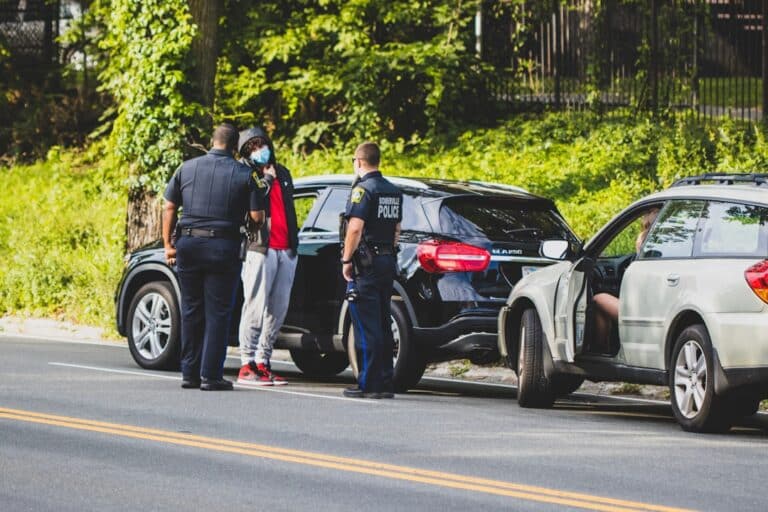Sleep Deprivation and Car Crashes: What the Numbers Reveal
Drowsy Driving: A Startling Reality
Sleep deprivation is more than just a personal inconvenience—it’s a critical public safety issue. Current statistics around drowsy driving reveal alarming trends that demand attention. According to the AAA Foundation, approximately 328,000 car crashes each year are linked to drowsy driving, leading to 109,000 injuries and around 6,400 fatalities. The financial implications are staggering as well; fatigue-related accidents alone cost over $109 billion annually, excluding property damage.
Driving while sleep-deprived can have effects comparable to driving under the influence of alcohol. In fact, going more than 20 hours without sleep is akin to having a blood alcohol concentration (BAC) of 0.08%, the legal limit in many areas. This raises serious questions about safety on the roads. My name is Ben Trapskin, and personal experiences with sleep deprivation prompted me to delve into these alarming statistics. Understanding how sleep deprivation affects driving can help us prevent dangerous incidents and save lives.
The Impact of Sleep Deprivation on Driving
Delayed Reaction Times
When you’re sleep-deprived, your reaction times slow down drastically. This poses a significant danger as your ability to respond to unexpected situations—like a sudden stop or a pedestrian crossing the road—diminishes. The Centers for Disease Control and Prevention (CDC) reports that being awake for 24 hours is comparable to having a BAC of 0.10%, surpassing the legal threshold for driving. The implications here are dire; at high speeds, every millisecond is critical.
Poor Judgment and Lack of Focus
Sleep deprivation undermines your cognitive functions, affecting your ability to make sound decisions and concentrate. When exhaustion sets in, your attention drifts, making you more likely to miss crucial signals or signs on the road. Research from the AAA Foundation shows that drowsy drivers are involved in a shocking 17.6% of all car crashes—significantly higher than previous estimates.
The Risk of Falling Asleep at the Wheel
Perhaps the most alarming consequence of sleep deprivation is the risk of falling asleep while driving. Imagine pushing through fatigue late at night, your eyelids growing heavy. You may experience “microsleep” episodes—brief lapses lasting only a few seconds. During those seconds, your vehicle could travel the length of a football field. The dangers are real, as illustrated by the case of Rusty Burris, who became paralyzed after driving for 36 hours without sleep and crashing into an embankment.
Statistical Insights on Drowsy Driving
Annual Statistics
Drowsy driving is a significant contributor to road safety issues. Each year, the AAA Foundation confirms that around 328,000 crashes are caused by fatigued drivers, resulting in 109,000 injuries and approximately 6,400 fatalities. These striking statistics highlight that sleep deprivation is not merely a personal health issue; it’s a public safety crisis.
Comparative Risk Analysis
Driving while drowsy mirrors the risks of driving under the influence of alcohol. The National Safety Council (NSC) states that going without sleep for over 20 hours can impair you similarly to a BAC of 0.08%. This acute risk factor means that drivers who are sleep-deprived are three times more likely to be involved in a crash compared to alert drivers.
Underreported Incidents
Despite clear evidence of the risks, the incidence of drowsy driving is frequently underreported. The CDC estimates that one in 25 drivers has admitted to falling asleep while driving in the past 30 days, yet fewer than 30% believe law enforcement is likely to pull drowsy drivers over. The actual toll of crashes related to sleep deprivation is likely far higher than the existing data suggests.
High-Risk Groups for Drowsy Driving
Teen Drivers
Teenagers are particularly vulnerable to drowsy driving. Their tendency to drive late at night, combined with inexperience, makes them a high-risk group. Data from the AAA Foundation highlights that drivers aged 16 to 24 are involved in about 20% of drowsy driving accidents annually.
Shift Workers
Those working irregular hours, particularly night shifts, face significant risks due to chronic sleep deprivation. The CDC reports that 22.3% of night-shift workers experience excessive daytime sleepiness, increasing their likelihood of car accidents significantly—by as much as 300% if they also have a sleep disorder.
Commercial Drivers
Commercial drivers also face unique challenges, often working long hours under tight deadlines. A study by the Federal Motor Carrier Safety Administration indicated that 13% of crashes involving commercial vehicles resulted from driver fatigue. It’s not just the length of driving but also the time of day that plays a crucial role; most accidents occur within the first hour of their shifts.
Business Travelers
Business travelers frequently contend with jet lag and changing time zones, resulting in chronic fatigue. Research shows that about 25% of business travelers struggle with jet lag, exacerbating the risks associated with drowsy driving.
Recognizing the Warning Signs of Drowsy Driving
To combat the dangers of drowsy driving, awareness is key. Here are some warning signs that indicate you may be too tired to drive safely:
Physical Indicators
– Unfocused Vision: Blurry sight, excessive blinking, or difficulty keeping your eyes open are major clues.
– Heavy Head: Struggling to hold your head up contributes to dangerous driving conditions.
– Frequent Yawning: Yawning consistently can signal that it’s crucial to pull over for a rest.
Mental Indicators
– Lack of Focus: If you’re having trouble concentrating, it’s time to take a break.
– Increased Irritability: Feeling cranky or impatient may reflect sleep deprivation.
– Memory Lapses: Forgetting stretches of recent road time indicates you should not continue driving.
Preventing Drowsy Driving
Short-Term Solutions
– Caffeine: While caffeinated drinks may offer a temporary boost, they won’t replace necessary sleep.
– Naps: Pulling over for a brief 20-minute nap can markedly improve alertness.
– Fresh Air: Ventilation and engaging audio can keep you awake for brief periods.
Long-Term Strategies
– Adequate Sleep: Strive for 7-8 hours of restorative sleep each night.
– Avoiding Alcohol: Alcohol can exacerbate fatigue, so skipping it before driving is advisable.
– Medication Awareness: Be mindful of medications that can induce drowsiness and avoid driving after taking them.
Public education plays a crucial role in combating drowsy driving. Awareness campaigns that highlight the risks associated with sleep deprivation can make a substantial difference.
Conclusion
Reducing instances of drowsy driving begins with understanding the profound impacts of sleep deprivation. It’s clear that getting sufficient rest is essential for ensuring safety on the roads. As demonstrated by the statistics, a lack of sleep significantly heightens the risk of accidents, injuries, and fatalities.
To foster safer driving habits, we can implement several proactive measures:
– Prioritize a consistent sleep routine to improve sleep quality.
– Remain vigilant about the risks associated with driving during peak sleepiness periods.
– Advocate for public awareness initiatives geared toward drowsy driving prevention.
By making sleep a priority and being mindful of the consequences of drowsy driving, we can work together to enhance road safety. Let’s commit to becoming more informed drivers, ensuring we are well-rested before getting behind the wheel.



















